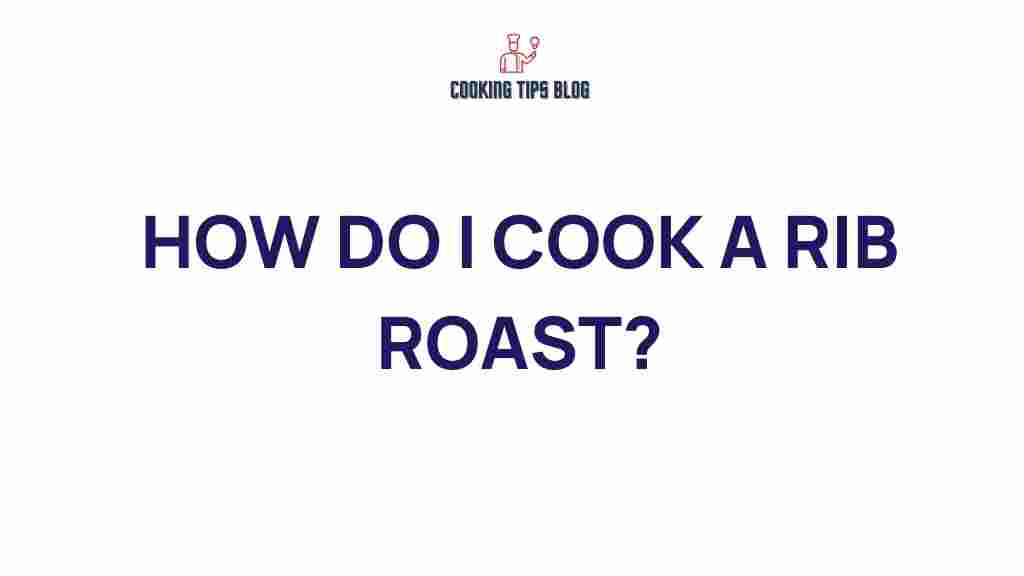Mastering the Art of Cooking the Perfect Rib Roast
If you want to impress your family and friends at your next gathering, mastering the rib roast is a culinary skill worth acquiring. This succulent cut of meat is perfect for celebrations and special occasions. In this guide, we will walk you through the entire process of cooking the perfect rib roast, from selecting the right cut to serving it with elegance.
Understanding Rib Roast
Before diving into the cooking process, it’s essential to understand what a rib roast is. Rib roast, also known as prime rib, is a cut of beef from the rib section. It’s known for its tenderness and rich flavor, making it a favorite among meat lovers. When cooked correctly, rib roast offers a juicy, flavorful experience that melts in your mouth.
Choosing the Right Rib Roast
Selecting the right rib roast is crucial for achieving the best flavor and tenderness. Here are some tips:
- Grade: Look for USDA Prime or Choice grade rib roasts. Prime has more marbling, resulting in a juicier cut.
- Bone-In vs. Boneless: Bone-in rib roasts tend to be more flavorful due to the bones’ contribution to the cooking process. Boneless rib roasts are easier to carve.
- Size: A good rule of thumb is to plan for about 1 pound per person. This allows for leftovers, which are always a bonus!
Preparing the Rib Roast
Now that you’ve chosen your rib roast, it’s time to prepare it for cooking. Follow these steps:
- Seasoning: Generously season your rib roast with salt and pepper. You can also use a blend of herbs and spices like garlic, rosemary, thyme, and olive oil for added flavor.
- Resting: Allow the seasoned roast to sit at room temperature for about an hour before cooking. This helps in cooking evenly.
Cooking the Perfect Rib Roast
Cooking a rib roast requires patience and attention to detail. Here’s a step-by-step process:
1. Preheat Your Oven
Start by preheating your oven to 450°F (232°C). This initial high temperature will help create a beautiful crust on your rib roast.
2. Searing the Roast
Place the rib roast in a roasting pan, bone-side down. Sear it in the preheated oven for about 20 minutes. This step locks in the juices and enhances the flavor.
3. Lower the Temperature
After 20 minutes, reduce the oven temperature to 325°F (163°C) and continue cooking. Use a meat thermometer to monitor the internal temperature.
4. Cooking Times
Cooking times will vary based on the size of your rib roast and desired doneness:
- Rare: 120-125°F (49-52°C) – approximately 15-20 minutes per pound
- Medium Rare: 130-135°F (54-57°C) – approximately 20-25 minutes per pound
- Medium: 140-145°F (60-63°C) – approximately 25-30 minutes per pound
- Medium Well: 150-155°F (65-68°C) – approximately 30-35 minutes per pound
- Well Done: 160°F and above (71°C) – approximately 35-40 minutes per pound
5. Resting the Roast
Once your rib roast reaches the desired temperature, remove it from the oven and let it rest for at least 20-30 minutes. This allows the juices to redistribute, ensuring a moist and flavorful roast.
Serving the Rib Roast
After resting, carve the rib roast into slices. Serve with sides like creamy mashed potatoes, roasted vegetables, or a fresh salad. Don’t forget to offer some horseradish sauce or au jus for dipping!
Troubleshooting Tips for Cooking Rib Roast
Even the most experienced cooks can encounter issues. Here are some common problems and how to solve them:
- Dry Meat: Ensure you’re not overcooking your rib roast. Use a meat thermometer for accuracy.
- Uneven Cooking: Make sure to let the roast sit at room temperature before cooking. This helps in achieving an even cook.
- Insufficient Flavor: Don’t skimp on seasoning. A good rub is essential for flavor.
Storing Leftover Rib Roast
If you’re fortunate enough to have leftovers, store them properly to maintain quality:
- Wrap the rib roast in aluminum foil or place it in an airtight container.
- Store in the refrigerator for up to 3-4 days or freeze for longer storage.
- Reheat in the oven at a low temperature to preserve moisture.
Conclusion
Cooking a rib roast may seem daunting, but with the right approach, you can master this delicious dish. By carefully selecting your cut, seasoning it well, and following the cooking process, you’ll be able to serve a rib roast that will leave your guests raving. For more culinary tips and recipes, check out our cooking blog.
Remember, practice makes perfect. Don’t hesitate to experiment with different seasonings and cooking methods to find what works best for you. Happy cooking!
For additional information on beef cuts and cooking techniques, visit the USDA’s Food Safety and Inspection Service.
This article is in the category Recipes and created by Cookingtipsblog Team
